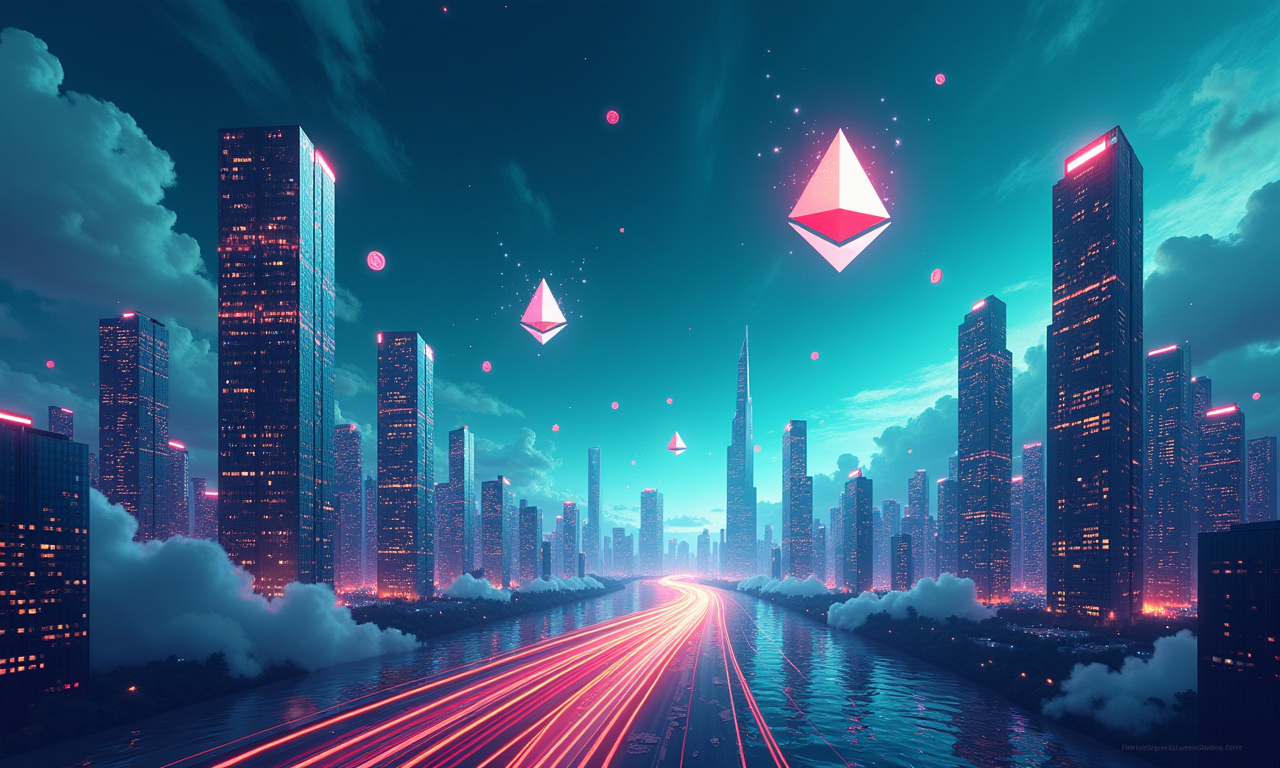Okay, let's be real. We've all been there. You finally track down that ideal Pepe NFT that’s surely set to be a blue-chip (possibly!), and then BOOM! Gas fees are rug pulls for your pockets. All of a sudden, that digital magnum opus is running you the price of your monthly lease payment. You start questioning your life choices. You start questioning everything. Is this really the future?
Gas Fees Got You Down?
The pain is real. It's too real. The fees are enough to make you reconsider that dream of becoming the next Bored Ape millionaire. Otherwise, you should seriously think about going to work in the private sector. Shudders. What if I told you that there’s some reason to hope? A long-awaited, much-touted savior riding in on a white horse (or, more likely, a Lambo powered by hopium)?
These L2s are supposed to save us, though. They are the knights of clean tech, here to save us from the tyranny of gas. We’re discussing a possible 17x increase in transaction capacity and an equivalent decrease in cost. Think of it! No more rage-quitting NFT mints since the fees are eating up more than the price of the art. Gone are the days of having to sell a kidney to buy a CryptoPunk. It's beautiful... almost too beautiful.
So, how do these L2s perform their miracles? Well, picture Ethereum mainnet as a busy highway during rush hour. L2s are more like creating a whole set of parallel express lanes. They process the majority of their traffic off-chain, only touching the mainnet for final settlement and security. Consider the mainnet as the final arbiter, making sure everything is above board. The L2s can take care of all the busywork, and the mainnet can simply stamp the final approval.
L2s To The Rescue? Really?
Yet the Ethereum Foundation has been extremely intentional in their strategic focus on L2s, allowing the mainnet to focus on being a super-duper secure settlement layer. This is a big deal. We're not just talking about faster transactions; we're talking about a fundamental shift in how Ethereum operates.
I'm seeing a lot of L2 maximalism out there, and frankly, it's making me nervous. Do you recall when everybody was gushing about how sharding was the one true way? Yeah, me too. So before we go down the road of building statues to Optimism and Arbitrum, let’s apply a little more rigor and ask some tough questions.
Are these L2s really decentralized? Are they truly secure? And, perhaps most importantly, will any of them really fix the gas fee issue once and for all? Or are we simply moving the bottleneck to a different place?
Here's where the "unexpected connection" comes in. Think about memecoins. They're wild, unpredictable, and often completely irrational. As we’ll see, they’re simultaneously a huge sticker shock and cost driver—and activity driver—on Ethereum. And sky-high fees are crashing the memecoin party.
Memecoins To The Moon, Fees To… Where?
No one’s going to drive $50 in gas just to purchase $10 of DogeBonkInuRocketMoon. (Alright, perhaps some of you do, but those are the same folks who are still on Internet Explorer.)
If L2s can truly lower the cost of transacting, then they might soon unleash a second wave of memecoin mania. Perhaps most visibly, we’re experiencing a Cambrian explosion of new tokens and communities. With that, all sorts of new ways to recklessly—and responsibly!—lose 100% of your investment dollars!
L2s aren't just about memecoins. They're about everything on Ethereum. DeFi, gaming, enterprise applications – it doesn’t matter, they all thrive with lower fees and faster transaction speeds. We're already seeing collaborations between L2 projects and AI tools, like AIDEN's integration with Intmax, which could unlock even more possibilities.
Let's not forget about the environment! With projects such as IBVM’s carbon-neutral, Bitcoin-based L2 laying down the regulatory progress, sustainability is increasingly taking root as a key pillar of this ecosystem.
As of early 2025, more than $42 billion in value is locked up within the Ethereum L2 ecosystem. Platforms such as Optimism and Arbitrum are now likely household names (okay fine, crypto household names). Even Vitalik Buterin at the helm of Ethereum is sold, pointing to phenomenal progress in his blog. This isn't just hype; it's actually happening.
The challenges remain. Widespread adoption is key. Developer tooling needs to improve. L2s have to demonstrate that they are up to the task of widely-felt persistent high demand without breaking down from the weight.
Thus, are L2s to be credited for saving us from the memecoin era? Are they the great enabler, the answer to our prayers, the secret sauce that will enable Ethereum’s true potential? Maybe. Maybe not. But they're definitely worth paying attention to.
I'm cautiously optimistic. As an end user, you better believe I’m rooting for L2s to succeed and live up to their claims of reducing fees and transaction times. I’m always willing to accept the hope that they might just be another overhyped tech. Now I know that as this rolls out, it will inevitably fall short of some people’s hopes.
What do you think? Are L2s the saviors they claim, or the next shiny object? Let me know in the comments. And if you’ve faced a gas fee nightmare, don’t hesitate to let us know. Misery loves company, after all. And here’s hoping your memecoins all reach the moon (without draining your wallet in gas fees).
What do you think? Are L2s the real deal, or just another flash in the pan? Let me know in the comments. And if you've had a particularly painful gas fee experience, feel free to share. Misery loves company, after all. And may your memecoins always go to the moon (without costing you a fortune in gas).




